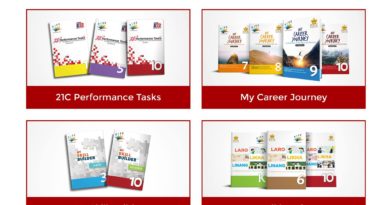EASY MONEY>BOOKSHELF
EASY MONEY>BOOKSHELF
Emotionomics: Leveraging Emotions for Business Success
By Dan Hill
The big idea: What people really think or feel about something, whether it’s an advertising message or a manager’s announcement, is often different from what they say. Facial coding, which is the interpretation of expressions in our faces, is the better way of understanding emotions and intentions.
What’s good: The author applies this science of facial coding into the world of business, specifically in marketing products and services as well as managing people, so there are plenty of actionable lessons from the book. The use of case studies and graphics brings the concept to life.
What’s bad: There’s a fair amount of self-promotion for the author’s consulting business throughout the book, and after the initial aha moment, things start to get repetitive.
Web site: www.sensorylogic.com
Recommendation: Browse it
The Richest Man in Town: The Twelve Commandments of Wealth
By W. Randall Jones
The big idea: Former Worth publisher spins off a magazine article into a full-blown book, surveying the richest person in 100 US cities and towns and interviewing many of them to find their common denominator. The result is what he calls the Twelve Commandments of Wealth, which includes: find your passion, be your own boss, say yes to sales, work through obstacles, and never retire.
What’s good: Plenty of anecdotes and quotations from most of the so-called RMIT (Richest Man in Town), including those not as well-known as Bill Gates, giving readers access to their insights and experiences.
What’s bad: Most of the commandments of wealth are things you already know and have read in countless books and magazine articles.
Web site: www.richestmanintown.com
Recommendation: Browse it
The E-Myth Revisited: Why Most Small Businesses Don’t Work and What to Do About It
By Michael E. Gerber
The big idea: Already considered a classic, with over two million copies worldwide, Michael Gerber’s book busts the main myth about entrepreneurship: that it’s not about working in your business but working on it. That means using the franchise model in setting up turnkey systems that let anyone run each aspect of your business with as little discretion and training as possible.
What’s good: The book’s popularity obviously meant the concept has struck a nerve among the burnt-out self-employed who really are nothing more than technicians producing products rather than entrepreneurs building the business itself to basically run on its own. The key is to balance the three roles of technician, manager, and entrepreneur. If you’re in the habit of collecting business bestsellers, it wouldn’t be embarrassing to have this on your bookshelf.
What’s bad: The story-telling approach is a tad annoying. The concept is solid and there’s an attempt to offer specific steps, but the book remains short in details (hence the author’s consulting business and ancillary products).
Web site: www.e-myth.com
Recommendation: Buy it
Off The Wall Marketing Ideas: Jumpstart Your Sales without Busting Your Budget
By Nancy Michaels and Debbi J. Karpowicz
The big idea: For small business, there are many ways of selling your products and services that cost little or nothing at all. All it takes is a little creativity and out-of-the-box thinking.
What’s good: This is a quick read with quite a number of helpful tips, particularly in the savvy use of PR. The authors are also generous with real-world examples of creative marketing from famous and not-so-famous business owners.
What’s bad: Many of the ideas – fancy business cards, speaking engagements – are trite (if you’ve already read Jay Conrad Levinson’s Guerilla Marketing, there’s nothing really fresh in this book) and not exactly off-the-wall edgy (except the part called Madcap Marketing). Recommendation: Skip it
[Best Sellers logo] All these titles are available at all NBS Bestsellers branches.
Escape from Cubicle Nation: From Corporate Prisoner to Thriving Entrepreneur
By Pamela Slim
The big idea: To make the transition from cubicle-trapped employee to flexible entrepreneur, you need to overcome what’s been stopping you, make a solid plan, and use pilot tests and prototypes to get your business off the ground.
What’s good: As a life coach and blogger, the author writes in just the right empathic, encouraging, and earnest tone that makes the book quite engaging to read. It helps that the book is well-organized, comprehensive, and practical without the dull and dizzying information overload found among less talented authors.
What’s bad: The first few chapters are a little touchy-feely, but the author hits her stride right after.
Web site: www.escapefromcubiclenation.com
Recommendation: Buy it
Brain Rules: 12 Principles for Surviving and Thriving at Work, Home, and School
By John Medina
The big idea: Understanding how the brain really works can help us deal with other people better whatever the situation. Some examples: the brain can focus on one thing at a time, so it’s useless to multi-task. It can pay attention for only 10 minutes before it needs to reset. The brain responds to visual input best. It needs to rest and exercise increases its power. It loses cells over time but it can grow new connections so we can continue to learn new things even in old age.
What’s good: Neuroscience is the new pop economics, at least as far as topics for non-fiction best-sellers are concerned. And this book definitely lives up to its promise. It’s a fun and engaging read.
What’s bad: Perhaps a few more applications in business and family life would have added actionable steps. But this is just a quibble – get your brain working!
Web site: www.brainrules.net
Recommendation: Buy it
Decorative Concrete: Expanded Edition: Recipes for Finishes Indoors and Out
By Jeanne Huber
The big idea: There’s more to concrete than dull pavements, walls, and floors. The book shows the flexibility of the material through innovative projects at home.
What’s good: Lots of contemporary design ideas and step-by-step instructions for floor tiles, furniture, countertops, sinks, pathways, etc. If you’re looking for original and affordable ideas to decorate your home inside and out, you’ll find plenty of projects here.
What’s bad: It takes a fair amount of work to pull off these projects.
Recommendation: Browse it
Home Essentials: Hundreds of Inspirational Ideas for Decorating and Furnishing Your Home
By Ros Byam Shaw, Maggie Stevenson, Fay Sweet, and Judith Wilson
The big idea: Decorating your home takes little cost but lots of creativity. This team of interior designers takes readers to each part of the home, breaking design into the basic components like color and storage, and then offering style options such as Contemporary, Country, Retro, and Family-friendly
What’s good: Generous use of big photos of real homes, helpful tips, and a strong emphasis for making the most of small spaces offer readers plenty of inspiration.
What’s bad: Good for an overview of interior design but not very helpful if you already have a specific style in mind.
Recommendation: Browse it
[Best Sellers logo] All these titles are available at all NBS Bestsellers branches.



